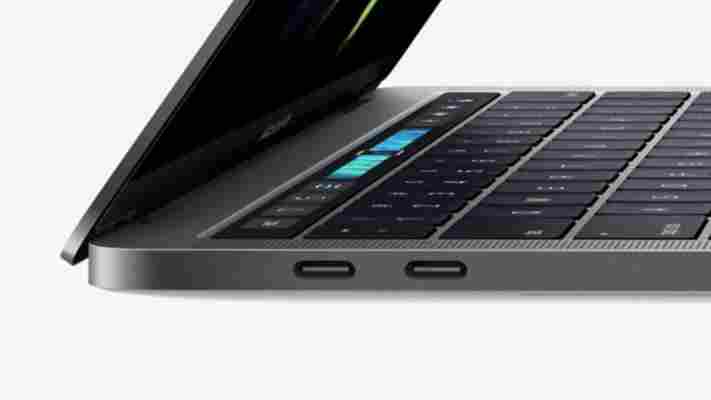The new MacBook Pros forego all traditional ports for Thunderbolt 3 via USB-C connectors, and that’s caused af consternation among the Apple fanbase and ridicule from the Windows front. Both sides are unjustified.

Let’s get this straight: USB-C is a great connector. In fact, it’s the best port we’ve ever had.
It’s as small as Micro USB, but more durable. It allows laptops like the new MacBooks and HP Spectre to be thinner than they could be with traditional USB Type-A, without the fear of your ports snapping off like they always seemed to do with MicroUSB.
On the other hand USB-C is also flat-out faster: When equipped with Thunderbolt 3, as all four of the ports on the new MacBook Pros are, it’s capable of 40 Gbps throughput, versus 10 Gbps on the quickest USB-A ports.
That throughput allows USB-C to power desktop-class external graphics cards, like on the Razer Blade Stealth (an omission I already miss on my Surface Book). It allows you to connect an external monitor, use it as a USB-hub, and provide power with a singular cable.
You can charge your computer on any of the available ports, on either side of the computer. It allows for higher quality audio than 3.5mm ports on many devices. Basically, it does everything as good or better than what’s commonly available.
Oh, and it’s reversible.
All this flexibility means it can replace the mess of cables you currently have in your drawer somewhere. Though there are going to be growing pains (Is this port Thunderbolt 3 speed? Is the cable up to spec?””) I dream of a world where I have one cable to rule them all.
As it stands right now these are some of the cables I might find myself using in the span of just a day or two:
Micro USB to USB-A connector to charge a Galaxy S7
USB-C to USB-A for every other 2016 flagship phone I’ve reviewed
Micro USB Type B to USB-A for my external hard drive
DisplayPort to Mini DisplayPort cable for my monitor
USB-B to USB-A connector for my DAC/AMP
Mini USB to USB-A cable for my microphone
HDMI to Mini DisplayPort adapter to connect my TV
3.5mm audio cable for my headphones
Proprietary to USB-A for my camera
A power cable for my laptop
I’ve gotten used to my litany of cables, but there’s no reason it has to be this way in 2016.
(For what it’s worth though, I’d have liked to see the SD card reader remain , because wireless transfer sucks)
You could argue that nobody has USB-C devices or cables right now, and you’d mostly right. But no one is going ever to have them if manufacturers don’t start adopting the standard en masse.
Sure, plenty of Windows laptops offer one USB-C or Thunderbolt 3 port, but so long as manufacturers also keep stuffing devices with the same old port as everyone is used to, everyone is going to keep on using those same old ports for a long time. Apple is the only singular company with clout to speed up the industry’s adoption of USB-C.
USB-C is an investment. It may seem impractical now, but it’s going to become much more common over the next year or two. People keep their computers for 3-5 years, and by the second half our your laptop’s lifecycle, the port will be much more common; it’s already the main connector used in Android devices this year. By the time you get your next laptop, you wont have to worry about finding the right cable for that random device.
(If anything, I’m happy Apple gave us four Thunderbolt 3 connectors, when the most ultraportables give you no more than two USB ports.)
It’s also likely than any updates to the USB standard over the years to come will continue using Type-C connectors. We’ve been using the Type-A shape since 1996 , yet USB devices have remained backwards compatible ever since. Early adopters may suffer from a mess of dongles, but that will always be the sacrifice with a new connector.
Truth be told, I don’t even care about the new MacBook Pro all that much. I love my Surface Book, I don’t like macOS, and I think the Touch Bar isn’t all its cracked up to be . But as far as all those old ports? Good riddance.